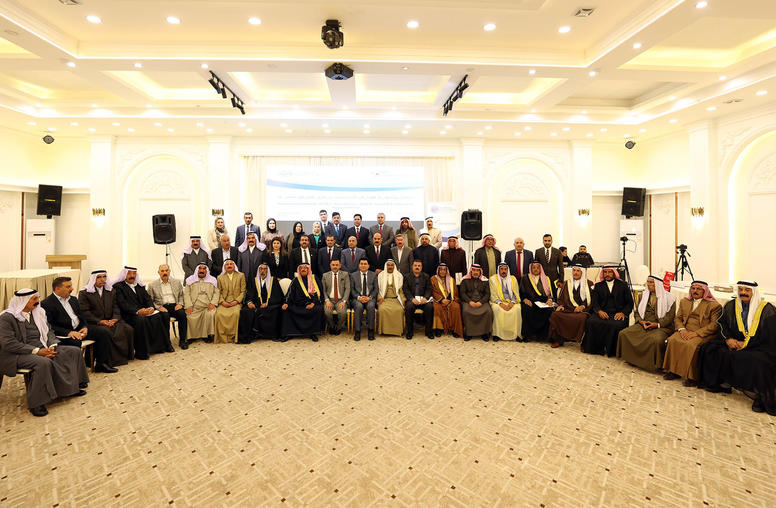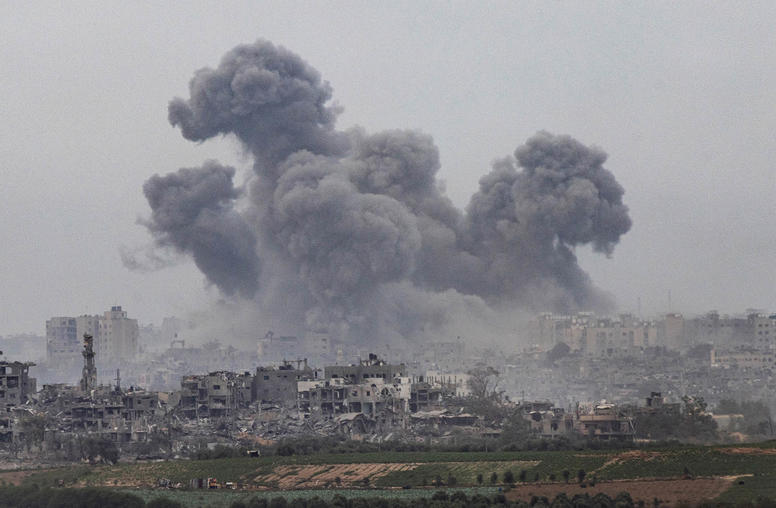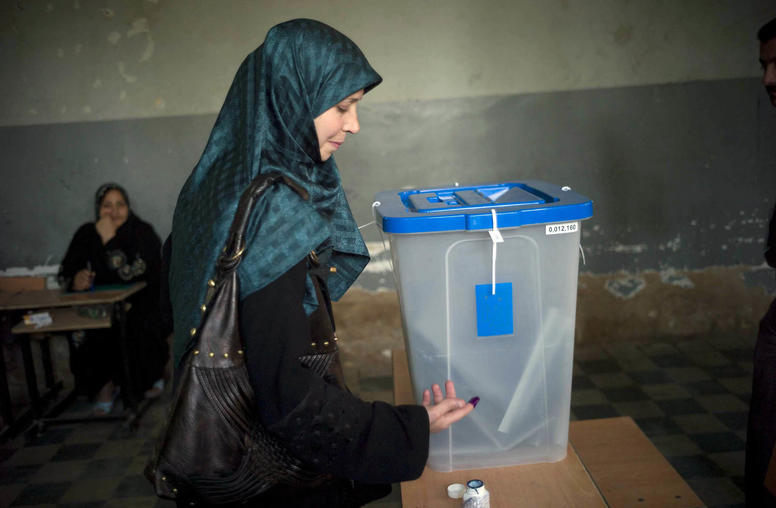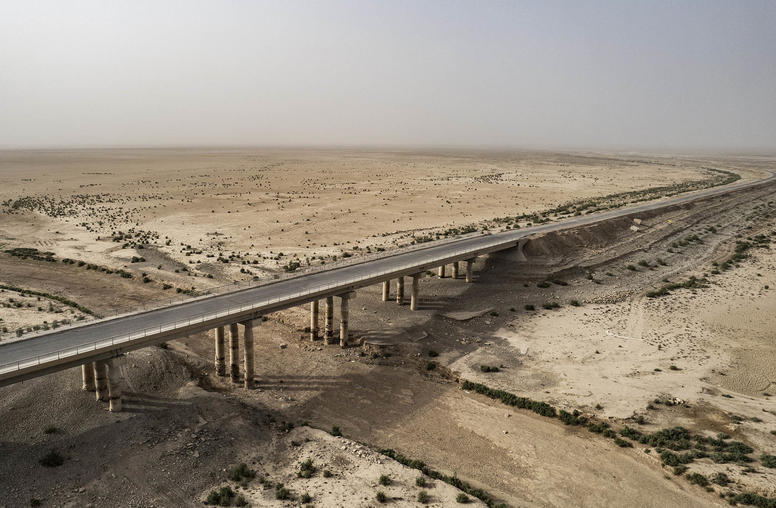Panel at USIP Urges More U.S. Activism in Iraq, Syria
The best way for the U.S. to promote stability in Iraq is to help bring an end to the increasingly sectarian civil war in Syria, experts said at a recent USIP event.
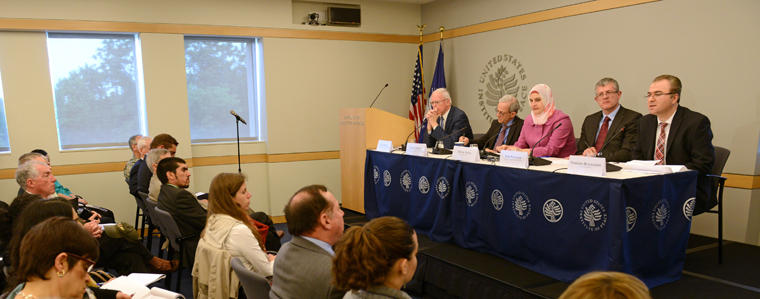
With U.S. influence over Iraq’s divided political scene much reduced since American troops withdrew from the country, the best way left for the United States to promote stability in Iraq is to help bring an end to the increasingly sectarian civil war in neighboring Syria, according to some of the specialists on Iraq who spoke at a May 6 meeting at the U.S. Institute of Peace (USIP).
“You can’t solve Iraq until Syria calms down,” said Daniel Serwer, a senior research professor of conflict management at the Johns Hopkins School of Advanced International Studies and a senior fellow at its Center for Transatlantic Relations. “What happens in Syria does not stay in Syria.”
James Jeffrey, former U.S. ambassador to Iraq now at the Washington Institute for Near East Policy, also characterized a more effective U.S. response to the Syrian civil war as the foremost way of assisting Iraq. “Nothing [in Iraq] can be fixed” if the Syrian conflict is not ended, he said.
Serwer and Jeffrey spoke at a meeting co-sponsored by USIP and the International Organization for Migration (IOM), an international nongovernmental organization working in conflict and post-conflict zones. The panel included Mike Pillinger, IOM’s chief of mission in Iraq and USIP program officer Sarhang Hamasaeed and was moderated by Manal Omar, director of Iraq, Iran and North Africa programs for USIP.
The discussion at USIP comes amid rising political and sectarian violence in Iraq that reflects renewed tensions between some Sunni groups and the Shia-led government of Prime Minister Nouri al-Maliki. The United Nations reported that 712 people were killed in attacks in April, more than in any month since June 2008. The deaths have sparked fear that Iraq could be risking a return to the bloody sectarian fighting that developed in the years after the U.S.-led invasion and the ensuing struggle for political power among Iraqis.
A key event in the current wave of violence occurred in Hawija in Kirkuk Province in north central Iraq. A standoff between the Iraqi Army and protesters gathered in a public square ended in a deadly Army raid on April 23, with tens of people killed. Attacks by militants followed in Anbar, Diyala and Ninawa, among other provinces. Though the violence has left many areas relatively unscathed, observers in Iraq are increasingly concerned that anti-government Sunni militancy could be on the rise. At the same time, al-Qaida in Iraq has been conducting one of its periodic terror campaigns, including car bombings and assassinations. Amid the insecurity, many Iraqis are expressing doubt about the ability of the Iraqi Army to provide protection.
The violence has also been unfolding against the background of a continuing political deadlock in Baghdad, in which Sunni-dominated political groups feel that they have been marginalized and pressured by the Maliki government. And the return to deeper Shia-Sunni tensions is being aggravated by a new regional factor: the civil war in Syria.
At the USIP-IOM event, Jeffrey argued that at the time that U.S. troops completed their withdrawal in December 2011, Iraq represented “a success of U.S. diplomacy and U.S. arms” with an established democratic, constitutional order. But he said the recent signs are “very, very troubling.” Said Jeffrey, “there’s a danger that things can unravel more.” The Syrian conflict, he added, will “open up the risk that this is going to spread,” drawing in Lebanon and Iraq into a broader, sectarian-dominated conflict.
Inside of Iraq, Jeffrey said, the United States is still positioned to play a helpful diplomatic role—but only to a degree. “We can increase the odds for a good outcome but we can’t control events,” he said.
Serwer, a former vice president for peacebuilding innovation at USIP who also served as executive director of the bipartisan Iraq Study Group, said that from the perspective Iraq’s Shia, Sunni and Kurdish politicians, “all three see Syria and Iraq as a single theater of political and military operations,” albeit with differing views of a preferred outcome. Serwer cited a regional risk of “a powerful, downward vortex that results in chaos.” At the same time, he noted, “I don’t think we [the United States] have anywhere the leverage we once had.”
Hamasaeed, an Iraq specialist with USIP, described “an entanglement of issues” in Iraq, including demands for government services and social justice, insecurity and the new Syria factor. “Now this is interwoven in a very dangerous way with the political division,” he said.
Noting the earlier role played by the United States as a mediator and facilitator across Iraq’s political divisions, Hamasaeed called for “major mediation of a political dialogue,” adding, “This needs to be jumpstarted, again.” However, he also cautioned that any such diplomatic engagement needs to reflect the fact that Iraqis retain “a lot of sensitivity” about their national sovereignty.
The Strategic Framework Agreement between the United States and Iraq, Hamasaeed said, provides an avenue for U.S. assistance, including advice on how Iraqi military and security forces might balance the need to maintain stability and to combat terrorism and armed groups with having to operate amid politically dissatisfied populations. The Iraqi Army is under great strain already. In advance of provincial elections in Anbar and Ninawa scheduled for July, it may well feel a temptation to curb ongoing protests there, including by force, Hamasaeed said. The prospect of deeper international intervention in Syria could also increase the urge to quell domestic protests in order to free the Iraqi Army to focus more on guarding the border, he said
Pillinger of IOM reviewed the group’s refugee work in Iraq and Syria, describing continuing humanitarian needs for shelter, food, clean water, jobs and education. One million Iraqi refugees are in other countries, and 1.1 million inside of Iraq remain displaced from their homes, he said. Some 140,000 Syrians have fled their own conflict for Iraq, arriving in Iraq at the rate of about 700 per day, he said. And even though “Iraq needs to take control of its own destiny”—taking more responsibility on itself—it will need considerable international support for some time, Pillinger said.
